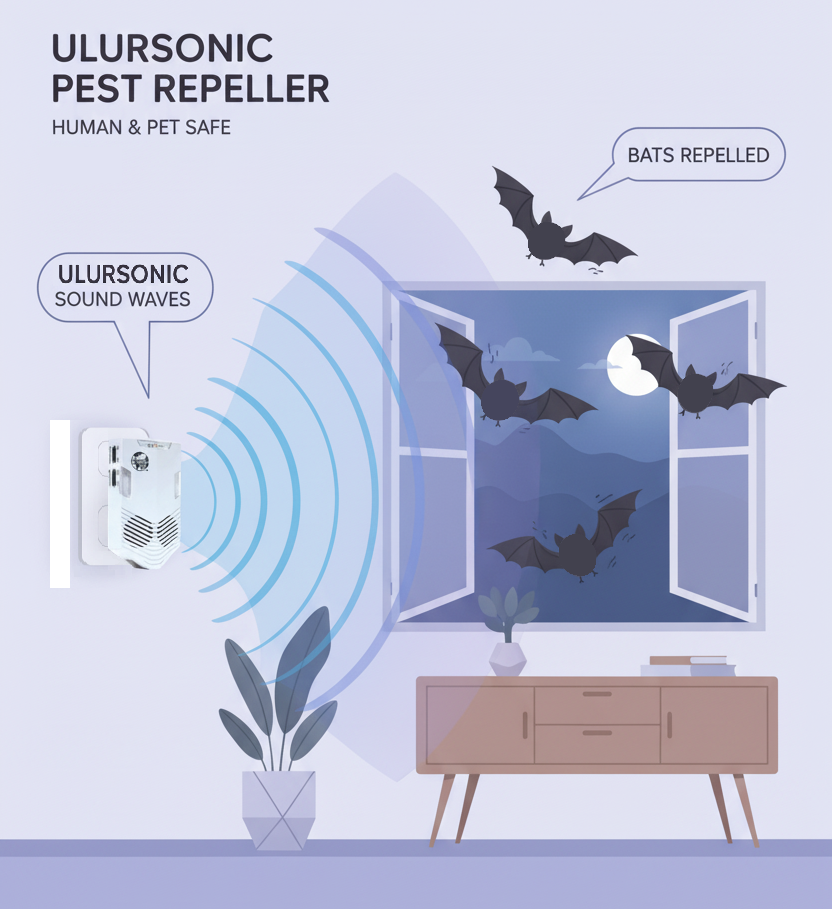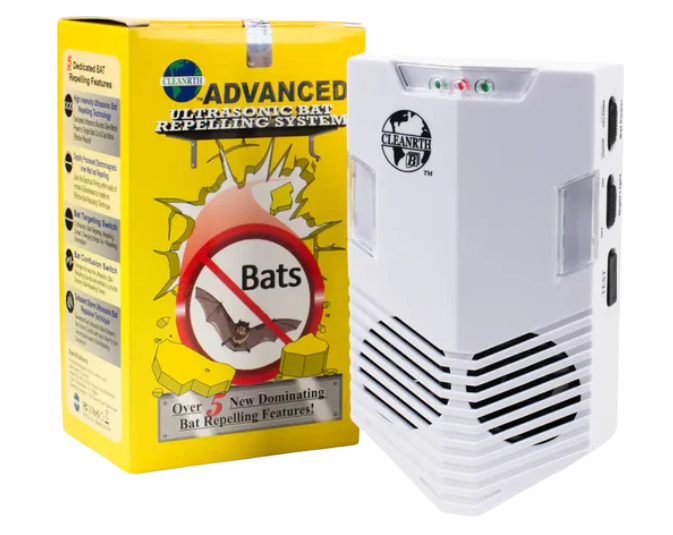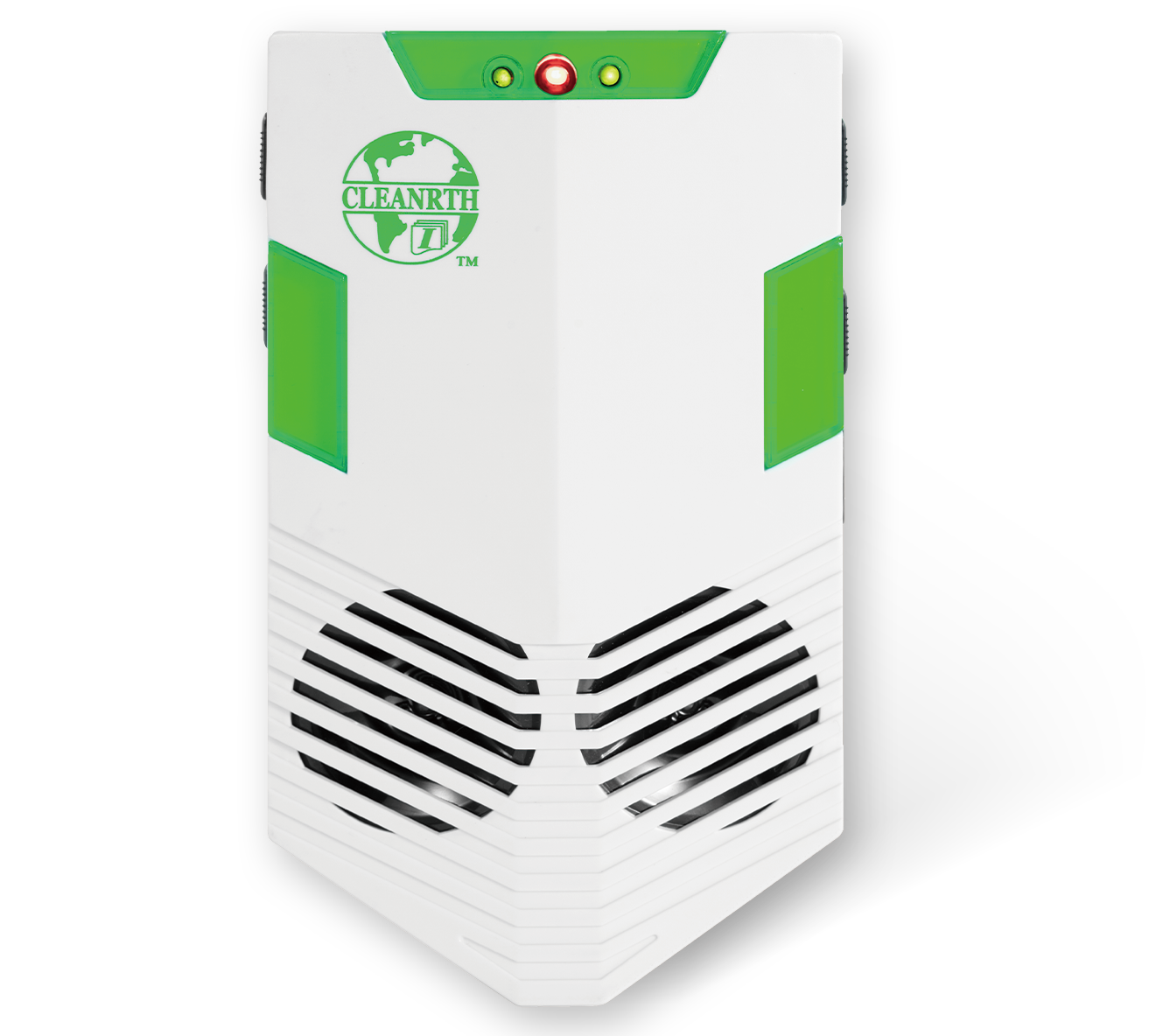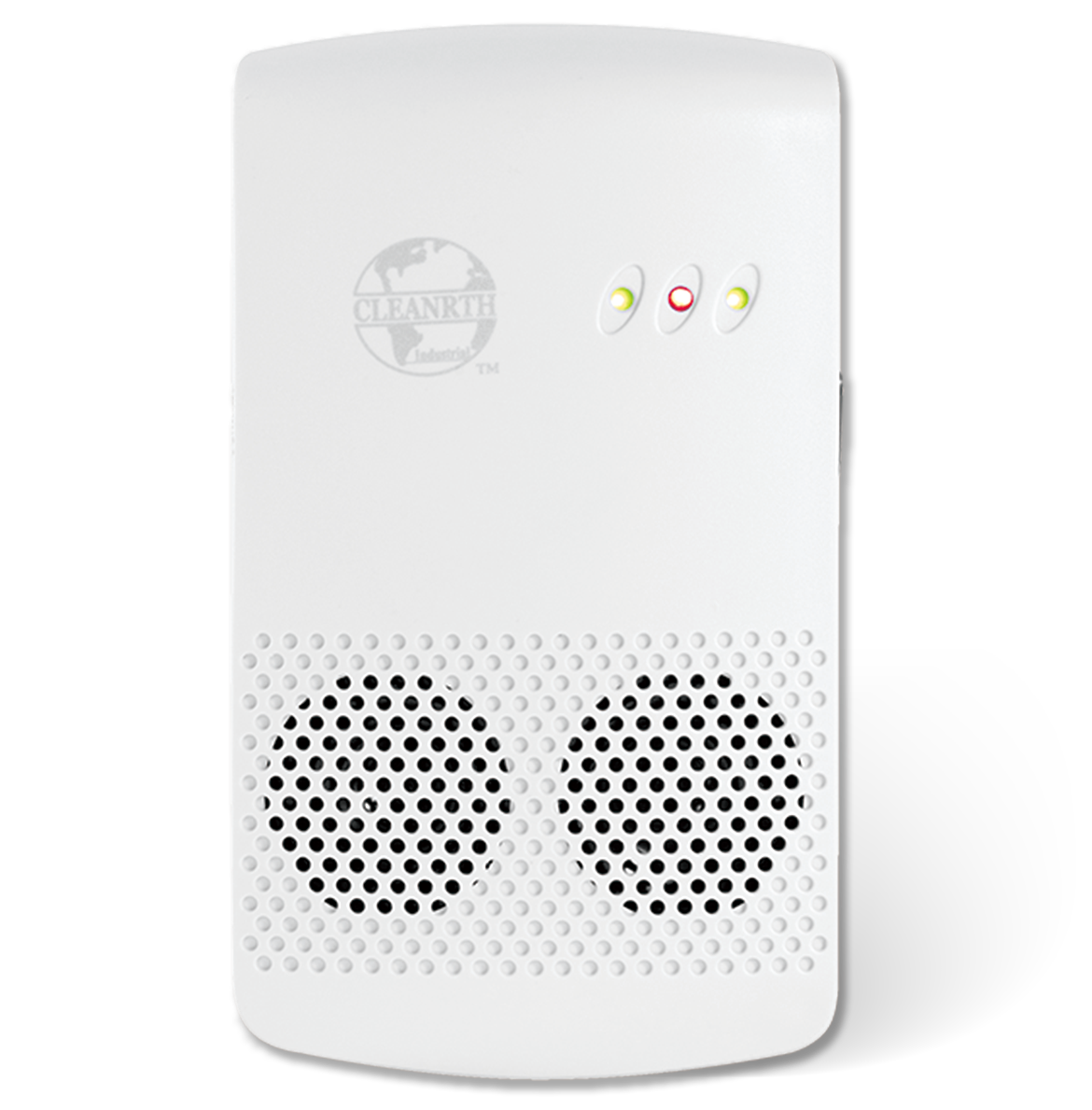If you've ever searched for a humane, chemical-free way to deal with pests, you've likely encountered ultrasonic pest repellers. These devices promise to drive away everything from mice and rats to insects and bats using high-frequency sound waves that are inaudible to humans. But do they actually work, or are they just another gimmick?
In this comprehensive guide, we'll examine the scientific evidence behind ultrasonic pest control, explore why some devices fail while others succeed, and introduce you to advanced technologies that have proven effective against specific pest problems.
The science behind ultrasonic pest repellers
Ultrasonic pest repellers work on a simple principle: they emit high-frequency sound waves (typically between 20-60 kHz) that are uncomfortable or disorienting to pests but generally inaudible to humans and most household pets.
Most mammals and insects can hear at higher frequencies than humans. For example:
- Rats and mice: Can hear up to 90 kHz
- Bats: Use ultrasound for echolocation (up to 200 kHz)
- Cockroaches: Detect vibrations and sounds up to 50 kHz
- Humans: Typically hear only up to 20 kHz (less as we age)
The theory is that these high-frequency sounds create an "acoustically hostile" environment that pests will avoid. However, not all ultrasonic devices are created equal, and their effectiveness depends heavily on the technology used.

What does the research say about effectiveness?
Scientific studies on ultrasonic pest repellers have produced mixed results, which explains why opinions about their effectiveness vary so widely.
Studies Showing Limited Effectiveness
Several university studies from the 1980s and 1990s found that basic ultrasonic devices had little to no effect on pest behavior. A comprehensive review by the University of Nebraska-Lincoln concluded that many early devices failed to repel rodents effectively. The Federal Trade Commission has even taken action against companies making exaggerated claims about their ultrasonic products.
Why Early Devices Often Failed
Research identified several reasons why first-generation ultrasonic repellers frequently underperformed:
- Fixed Frequency: Pests quickly habituate to constant, unchanging sounds
- Limited Range: Ultrasound doesn't travel well through obstacles and diminishes quickly with distance
- Insufficient Intensity: Many devices didn't produce sounds loud enough to effectively deter pests
- Wrong Frequencies: Some devices used frequencies outside the optimal hearing range of target pests
Advances in technology
More recent studies have shown that advanced ultrasonic devices with specific features can be effective. The key differentiators include:
What works
- Dynamic frequency modulation (prevents habituation)
- High-intensity output (sufficient volume to deter pests)
- Multiple emission modes (ultrasonic, sonic, electromagnetic)
- Species-specific frequency targeting
- Proper placement and sufficient coverage
What doesn't work
- Single-frequency, constant output
- Low-power devices
- Generic "one-size-fits-all" approaches
- Improper placement (behind furniture, in closets)
- Limited coverage area
Understanding the limitations
Even the most advanced ultrasonic repellers have limitations that users should understand:
| Pest Type | Effectiveness | Key Considerations |
|---|---|---|
| Rats & Mice | High (with advanced devices) | Most responsive to ultrasound; need devices with sufficient power and coverage |
| Bats | High (species-specific devices) | Requires specialized frequencies that disrupt echolocation |
| Insects | Moderate | Less responsive than rodents; works best in combination with other methods |
| Birds | Moderate to High | Combining ultrasonic with sonic and visual deterrents works best |
Important: Ultrasonic repellers work best as part of an integrated pest management approach. This means combining them with proper sanitation, exclusion methods (sealing entry points), and sometimes other control methods for severe infestations.
Advanced ultrasonic solutions that actually work
Based on the scientific principles of effective ultrasonic pest control, We have developed a range of specialized devices that address the limitations of earlier technologies. Each product incorporates advanced features that research has shown to improve effectiveness.

- Batonic™ Technology: Dual-speaker ultrasonic mode dynamically alternates sound channels.
- Safe & Humane: 100% safe for humans, cats, dogs, and most household pets.
- Precision Bat Control: Multiple customizable combinations for tough bat issues.
- Wide Coverage: Covers up to 7,000 sq. ft. in open areas.
- Durable & Weather-Resistant: Reliable performance in various environments.

- 5 Powerful Rodent-Repelling Technologies for superior protection.
- High Intensity Ultrasonic Waves effectively repel mice and rats.
- Electromagnetic Wall Penetration repels rodents inside walls.
- Turbulent Storm Technology prevents habituation.
- Rodent Targeting & Confusion Switches for adaptive control.
- Covers up to 7,000 square feet.

- Most powerful multi-pest repeller with direct targeting.
- Turbulent Storm™ Technology prevents pest habituation.
- High-Intensity Ultrasonic Tech drives insects, bats, and rodents to flee.
- Electromagnetic Wall Penetration for pests inside walls.
- 9,000 Sq. Ft. Coverage with triple pest targeting.
- Pest Confusion Switch creates unpredictable sound patterns.

- Enhanced Triple Scan Technology detects birds up to 115 feet away.
- Covers 12,000 sq. ft. — 2x the coverage of previous models.
- High-Intensity Adjustable Sounds (sonic and ultrasonic).
- Multi-Sensory Repelling with strobe lights and powerful sounds.
- Three Adjustable Modes for flexible operation.
- Water-resistant design with multiple power options.
Frequently asked questions
Most advanced ultrasonic repellers show results within 2-4 weeks. It takes time for pests to become uncomfortable enough to leave their established nesting areas. For severe infestations, it may take longer as pests may initially try to adapt before seeking new habitats.
Most household pets including cats and dogs are not affected by ultrasonic frequencies, as their hearing range, while broader than humans, typically doesn't extend to the specific frequencies used in modern devices. However, some small pets like hamsters, guinea pigs, and rabbits may be sensitive, so it's recommended to consult with a veterinarian if you have these pets.
Ultrasonic waves have difficulty penetrating solid objects like walls. This is why devices with electromagnetic technology (which can travel through wiring in walls) are more effective for whole-house protection. For best results, place ultrasonic devices in open areas and use multiple units for complete coverage.
Many negative reviews come from users of basic, single-frequency devices that are ineffective against pests that have habituated to the sound. Additionally, users often have unrealistic expectations (instant results, complete elimination of severe infestations) or don't use the devices properly (wrong placement, insufficient coverage). Advanced devices with the features mentioned in this article have much higher success rates.
The verdict: do ultrasonic pest repellers work?
Based on current scientific evidence and user experiences, the answer is: Yes, advanced ultrasonic pest repellers can be effective when they incorporate the right technologies and are used correctly.
The key is selecting devices that feature:
- Dynamic frequency modulation to prevent pest habituation
- Sufficient power and coverage area for your space
- Species-specific targeting for your pest problem
- Additional technologies like electromagnetic waves for whole-structure protection
While ultrasonic repellers may not be a magic bullet for severe infestations, they offer a safe, chemical-free solution for prevention and mild to moderate pest problems. When used as part of an integrated approach that includes sanitation and exclusion methods, they can significantly reduce or eliminate pest issues.
Ready to try advanced ultrasonic pest control?
Experience the difference that scientifically-designed ultrasonic technology can make. Our specialized repellers address the limitations of basic devices with features proven to enhance effectiveness.
Show all pest control solutions